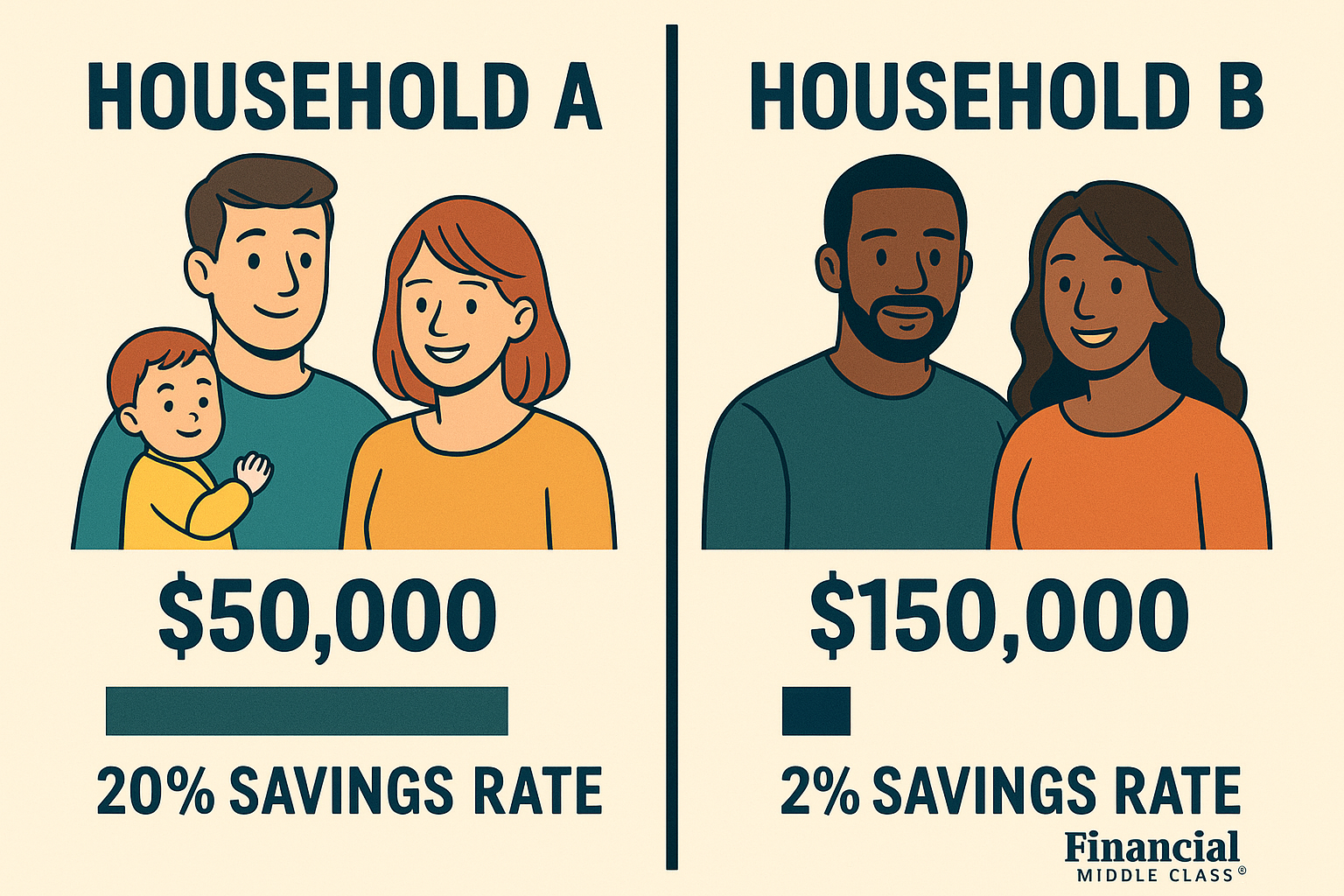
Maximizing Social Security Survivor Benefits
By Article Posted by Staff Contributor
The estimated reading time for this post is 221 seconds
One of Our goals here at Financial Middle Class is to help individuals make informed decisions regarding their financial well-being. This comprehensive guide will delve into the intricacies of Social Security Survivor Benefits.
We will explore how these benefits work, eligibility requirements, the pros and cons of receiving benefits early, benefits for children and others, blackout periods, full retirement age considerations, and strategies to maximize Social Security benefits.
Understanding these key aspects enables you to make informed decisions to optimize your financial future.
How Do Survivor’s Benefits Work?
Social Security Survivor Benefits provide financial support to the surviving family members of deceased individuals who have contributed to the Social Security system.
These benefits aim to replace a portion of the deceased individual’s lost income and offer stability to the family. Survivor benefits are calculated based on the deceased’s Social Security earnings record.
Eligibility for Survivor Benefits:
To be eligible for Social Security survivor benefits, you must be a surviving spouse, child, parent, or dependent of the deceased individual.
Let’s explore the specific eligibility criteria for each category:
- Surviving Spouse: Full survivor benefits are available to surviving spouses who have reached full retirement age. However, reduced benefits can be claimed as early as age 60. In certain circumstances, such as caring for a child under 16 or a disabled child, benefits may be available at any age.
- Surviving Children: Unmarried children under 18 years of age or up to age 19, if still attending high school, may qualify for survivor benefits. Additionally, children with disabilities that began before age 22 may also be eligible.
- Surviving Parents: If the deceased individual provided at least half of the financial support for their parents, the parents may be eligible for survivor benefits.
Applying for Survivor Benefits
Contacting the Social Security Administration (SSA) is essential to apply for Social Security survivor benefits. The application process involves submitting the required documentation, such as the death certificate, proof of relationship to the deceased, and personal identification.
The SSA will guide you through the application process and determine your eligibility.
Receiving Survivor Benefits Early: Pros and Cons
Claiming survivor benefits before reaching full retirement age has both advantages and disadvantages. Let’s consider the pros and cons:
Pros:
- Immediate Financial Assistance: Early survivor benefits provide crucial financial support during loss, helping cover daily expenses and maintain financial stability.
- Extended Support for Dependent Children: Claiming benefits early ensures continuous financial support for dependent children until adulthood.
Cons:
- Reduced Benefit Amount: Claiming survivor benefits before reaching full retirement age reduces the monthly benefit amount.
- Impact on Future Retirement Benefits: Early claiming can potentially decrease the surviving spouse’s retirement benefits if they switch to their benefits later.
Benefits for Children and Others:
Survivor benefits are vital in supporting dependent children and other qualifying individuals. These benefits help cover living expenses, education, and medical expenses until the children reach adulthood.
Additionally, divorced spouses who meet specific criteria may be eligible for survivor benefits.
Blackout Periods and Full Retirement Age:
A blackout period is between the youngest child turning 16 and the surviving spouse reaching full retirement age. During this period, survivor benefits are typically not payable.
However, once the surviving spouse reaches full retirement age, they can switch from receiving survivor benefits to their own retirement benefits if it results in a higher monthly payment.
Maximizing Social Security Benefits
To maximize Social Security survivor benefits, I recommend considering the following strategies:
- Delay Claiming Benefits: Delaying the claim until reaching full retirement age or even beyond can result in higher monthly benefits, providing greater financial security in the long run.
- Coordinate Benefits: If both spouses have their own work records and are eligible for retirement benefits, exploring different claiming strategies and evaluating which approach yields the highest combined benefits is crucial.
- Seek Professional Guidance: Consult a Certified Financial Planner or Social Security expert who can analyze your specific circumstances and provide tailored strategies to optimize your Social Security benefits.
Conclusion
Social Security Survivor Benefits offer vital financial support to families navigating the loss of a loved one. Understanding how these benefits work, eligibility criteria, and the implications of claiming benefits early.
While there are pros and cons, survivor benefits to ensure that surviving family members receive the financial assistance they need during challenging times.
By implementing strategic decisions and seeking professional advice, individuals can maximize their Social Security survivor benefits and establish a more secure financial future for themselves and their families.
RELATED ARTICLES
It’s Not About How Much You Make — It’s How Much You Keep
The estimated reading time for this post is 504 seconds Many Americans are earning more than ever, but far too many have almost nothing to show for it beyond bills, debt, and stress. Even as wages have risen in recent...
Portable Mortgages: Why the Middle Class Should Be Able to Take Their 3% Rate With Them
The estimated reading time for this post is 1209 seconds If you’re sitting on a 3% mortgage right now, congratulations — and I’m sorry. Congratulations, because you locked in one of the best deals the American housing market has ever...
1 Comment
Leave Comment
Cancel reply

It’s Not About How Much You Make — It’s How Much You Keep

Portable Mortgages: Why the Middle Class Should Be Able to Take Their 3% Rate With Them

Does Retiring the U.S. Penny Nudge America Further into a Cashless Future?
Gig Economy
American Middle Class / Nov 16, 2025
It’s Not About How Much You Make — It’s How Much You Keep
The estimated reading time for this post is 504 seconds Many Americans are earning more than ever, but far too many have almost nothing to show...
By Article Posted by Staff Contributor
American Middle Class / Nov 15, 2025
Portable Mortgages: Why the Middle Class Should Be Able to Take Their 3% Rate With Them
The estimated reading time for this post is 1209 seconds If you’re sitting on a 3% mortgage right now, congratulations — and I’m sorry. Congratulations, because...
By Article Posted by Staff Contributor
American Middle Class / Nov 12, 2025
Does Retiring the U.S. Penny Nudge America Further into a Cashless Future?
The estimated reading time for this post is 414 seconds Introduction: A Tiny Coin, a Loud Message In February 2025, President Trump told Treasury to stop...
By Article Posted by Staff Contributor
American Middle Class / Nov 11, 2025
From FDR’s 30-Year Breakthrough to Trump’s 50-Year Pitch: Is This Still About Homeownership — or Just Smaller Payments?
The estimated reading time for this post is 375 seconds In the 1930s, Franklin D. Roosevelt’s team looked at a housing market full of short, risky...
By Article Posted by Staff Contributor
American Middle Class / Nov 10, 2025
Racial gaps in retirement plans leave Black, Hispanic workers with fewer benefits
The estimated reading time for this post is 300 seconds Black and Hispanic workers who do everything right — enroll in their employer’s 401(k) or 403(b),...
By FMC Editorial Team
American Middle Class / Nov 09, 2025
FICO Says Scores Are Slipping to 715 — Here’s What’s Actually Driving It (and How to Stay Out of the Downward Group)
The estimated reading time for this post is 499 seconds Introduction: The latest FICO® Score Credit Insights report shows something easy to miss if you only...
By Article Posted by Staff Contributor
American Middle Class / Nov 09, 2025
Why So Many Middle-Class (and Upper-Middle-Class) Households Can’t Stick to a Budget
The estimated reading time for this post is 615 seconds There’s a quiet tax on the American middle class, and it’s not just the one you...
By MacKenzy Pierre
American Middle Class / Nov 09, 2025
Reverse Mortgages for Middle-Class Families: Relief, or Just Eating the Inheritance?
The estimated reading time for this post is 509 seconds Too many middle-class Americans are taking care of two generations at once. You’ve got a kid...
By Article Posted by Staff Contributor
American Middle Class / Nov 08, 2025
Hosting Without the Hangover: Potluck Math That Actually Works
The estimated reading time for this post is 281 seconds Too many of you are cooking for 25 when 12 RSVPed. That’s why hosting feels expensive....
By Article Posted by Staff Contributor
American Middle Class / Nov 08, 2025
The One-Gift Rule: How to Stop Holiday Gift Inflation Without Looking Cheap
The estimated reading time for this post is 339 seconds “Setting a One-Gift Rule to protect the family budget” — Financial Middle Class Too many of...
By Article Posted by Staff Contributor
Latest Reviews
American Middle Class / Nov 16, 2025
It’s Not About How Much You Make — It’s How Much You Keep
The estimated reading time for this post is 504 seconds Many Americans are earning more...
American Middle Class / Nov 15, 2025
Portable Mortgages: Why the Middle Class Should Be Able to Take Their 3% Rate With Them
The estimated reading time for this post is 1209 seconds If you’re sitting on a...
American Middle Class / Nov 12, 2025
Does Retiring the U.S. Penny Nudge America Further into a Cashless Future?
The estimated reading time for this post is 414 seconds Introduction: A Tiny Coin, a...




Pingback: Windfall Elimination Provision Vs. Government Pension Offset -